
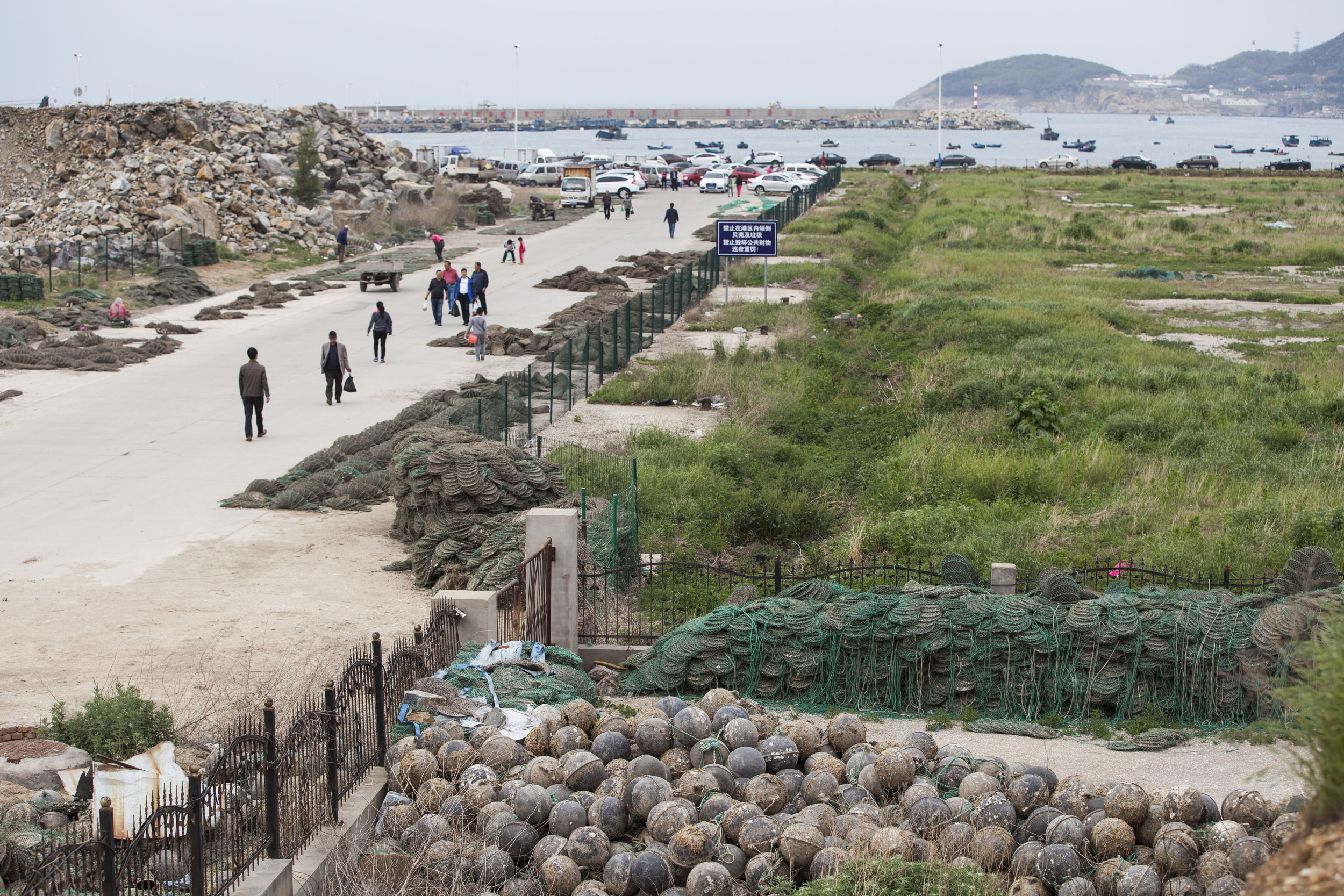


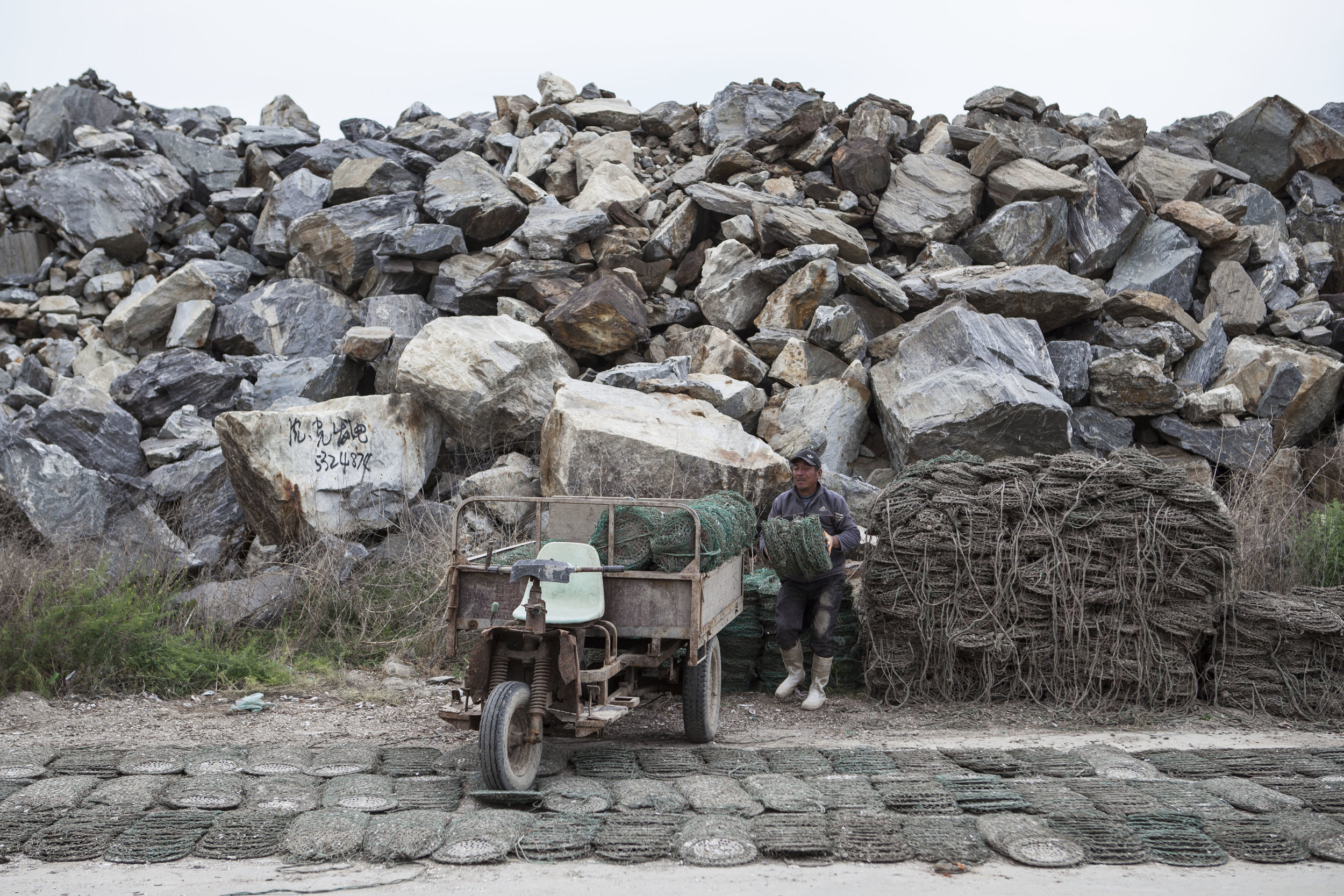

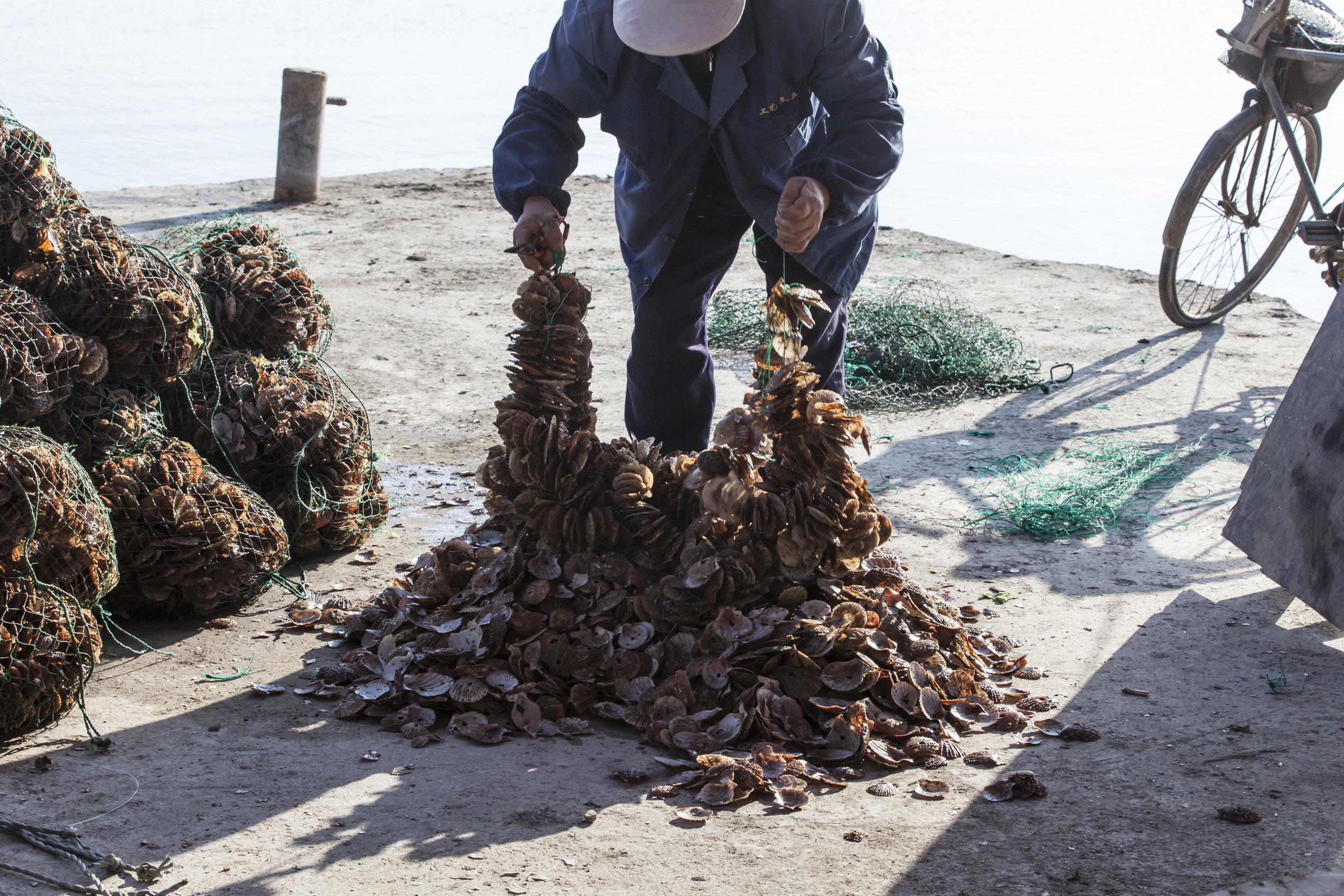
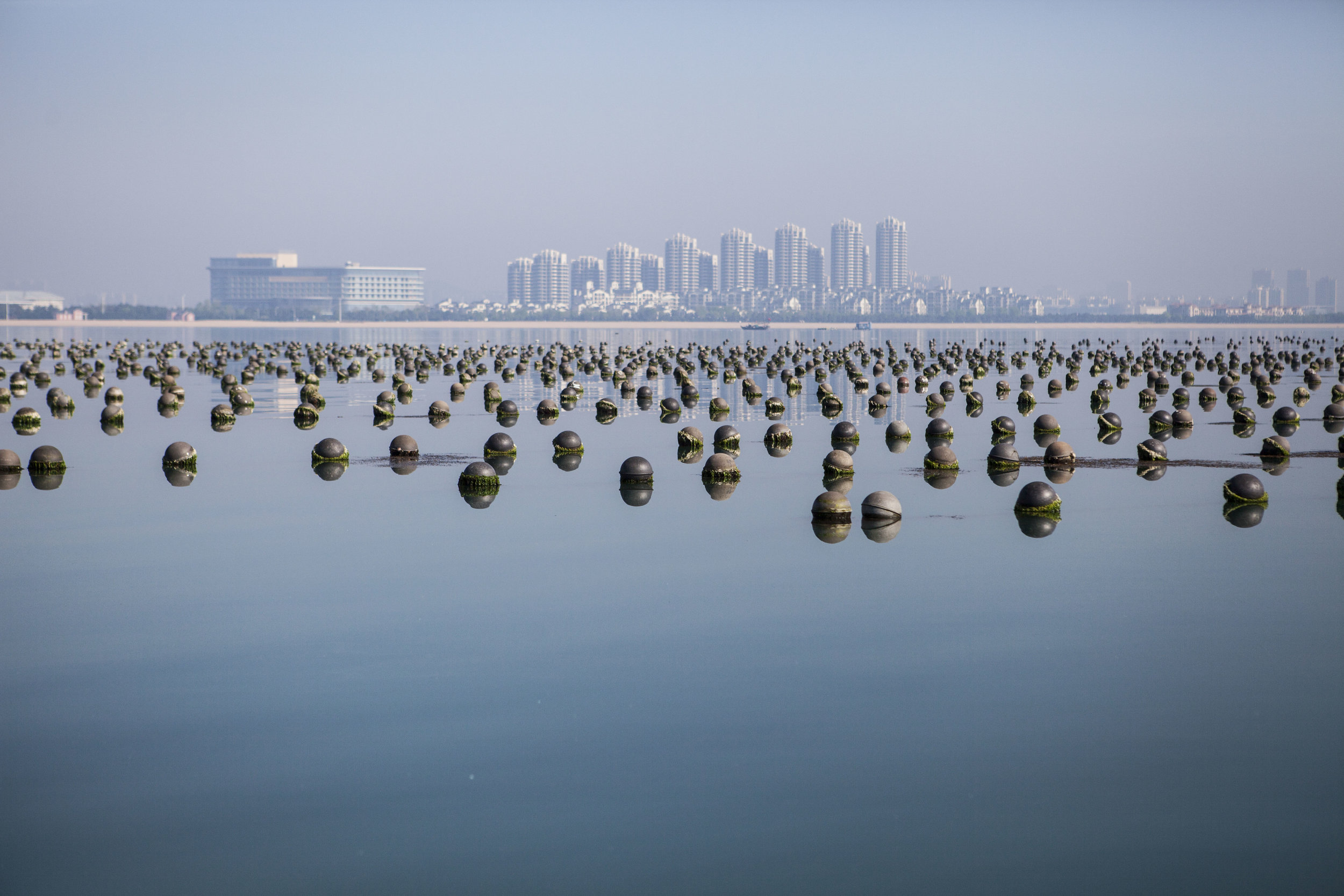
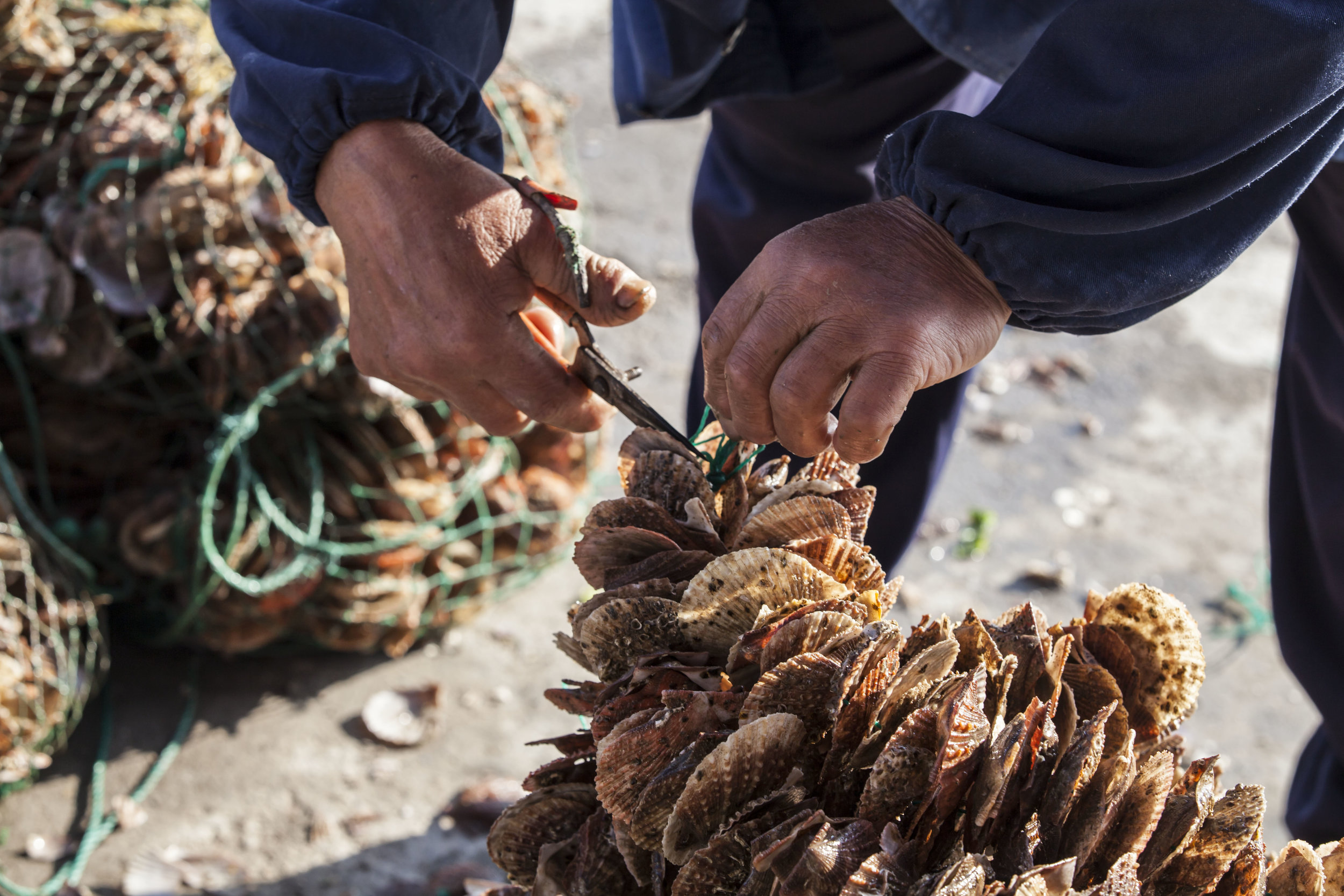



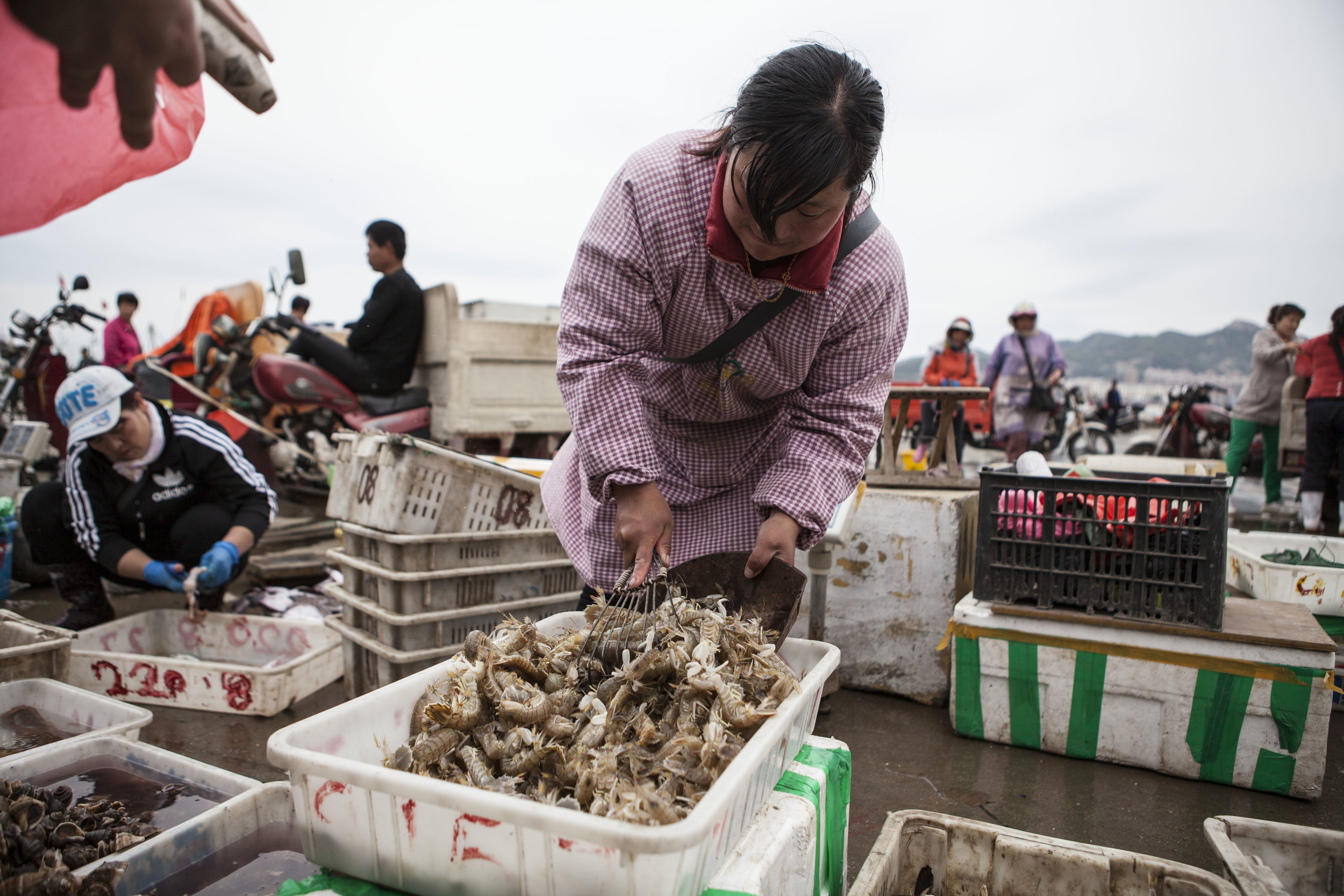
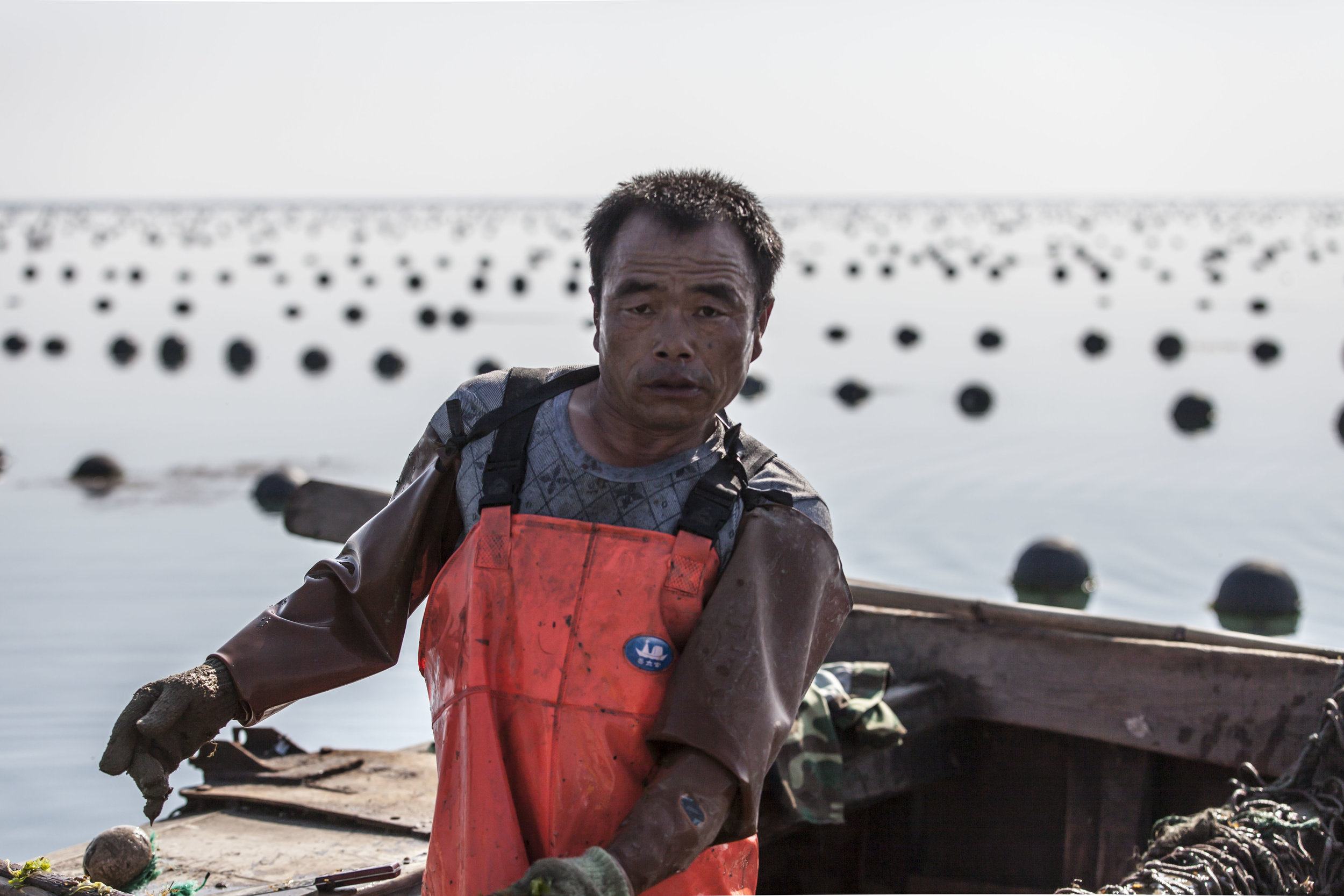


Over the past three decades, the number of people who work in China’s fishing industry has increased by more than 10 million. Based on official statistics, net annual income of the fishermen increased 140 times from 1978 to 2013, resulting in fishing becoming a significantly more lucrative trade than farming. This income difference is one of the reasons that workers from China’s inland provinces are attracted to the fishing industry.
In Ya Tou Zhen, we visit a private oyster farm. In one method of cultivating oysters, a substrate is required onto which the oyster can attach as a 'spat' and subsequently grow. In Ya Tou Zhen, the substrate is old clam shells.
Over the past three decades, the number of people who work in China’s fishing industry has increased by more than 10 million. Based on official statistics, net annual income of the fishermen increased 140 times from 1978 to 2013, resulting in fishing becoming a significantly more lucrative trade than farming. This income difference is one of the reasons that workers from China’s inland provinces are attracted to the fishing industry.
In Ya Tou Zhen, we visit a private oyster farm. In one method of cultivating oysters, a substrate is required onto which the oyster can attach as a 'spat' and subsequently grow. In Ya Tou Zhen, the substrate is old clam shells.